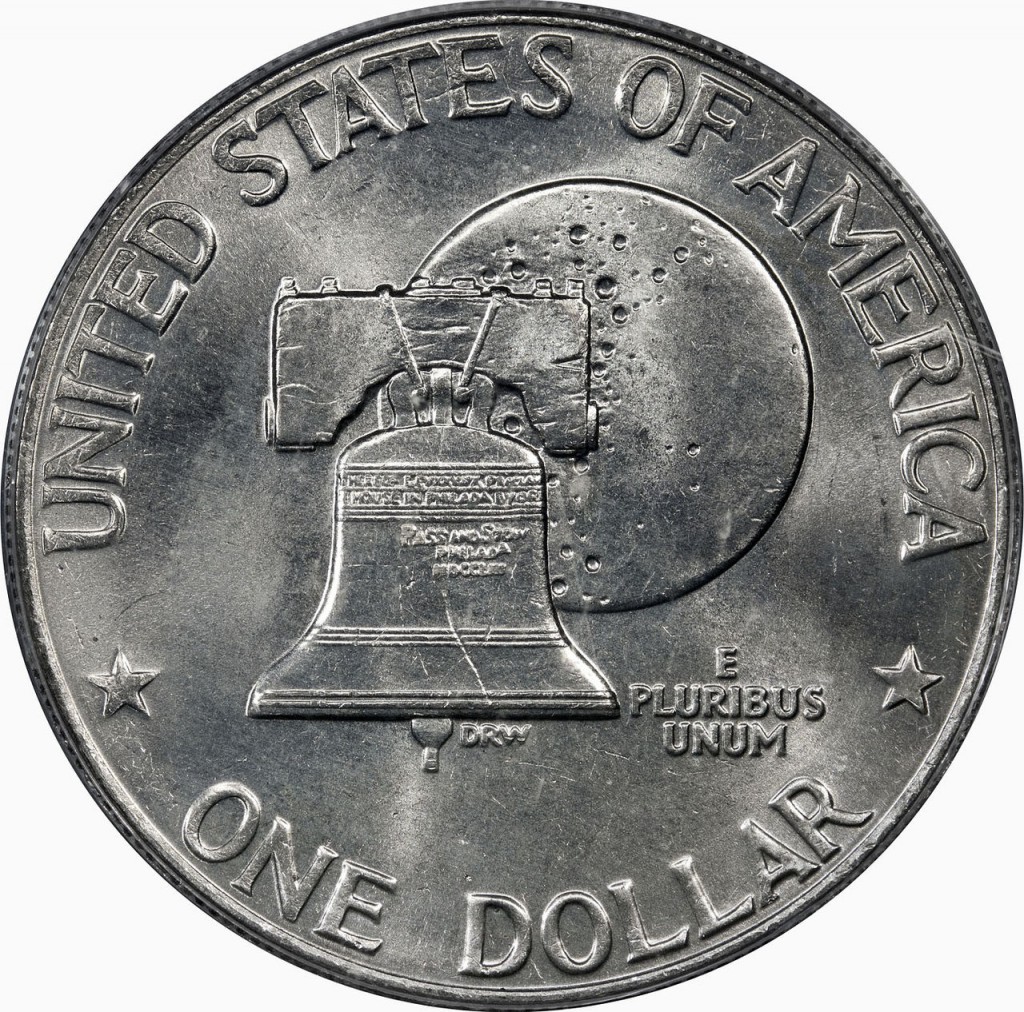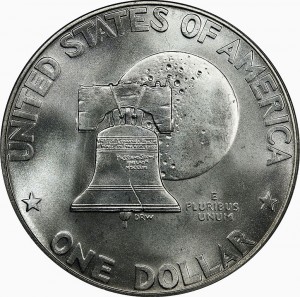 REMINDER: If you are not a member of the ANA, I will pay your 2021 Gold Membership dues for the first 25 readers of the Coin Collectors Blog who join during National Coin Week. All you have to do is click this link and use the Promotion Code NCW21SB when you check out.
REMINDER: If you are not a member of the ANA, I will pay your 2021 Gold Membership dues for the first 25 readers of the Coin Collectors Blog who join during National Coin Week. All you have to do is click this link and use the Promotion Code NCW21SB when you check out.The 1935 Peace Dollar was the last silver dollar struck for circulation. The dollar coin was not very popular because of its size and weight compared with the paper dollar. After silver prices rose and silver dollars were disappearing from circulation, there was a need to mint more coins.
By 1969, the primary customer using the dollar coin was Las Vegas casinos. To satisfy the demand, Mint Director Mary Brooks proposed to issue new dollar coins. Congress rejected Brooks’ proposal to issue silver-clad dollars. Eventually, Congress passed the law to use the same copper-nickel clad composition as other coins.
The selection of World War II general and President Dwight D. Eisenhower was easier to justify following his death on March 28, 1969. To honor Eisenhower, the reverse of the coin would celebrate the formation of the National Aeronautics and Space Administration (NASA), founded in 1958 during his administration. Mint Chief Engraver Frank Gasparro used the Apollo 11 mission insignia for the reverse design.
- Eisenhower Dollar obverse
- Eisenhower Dollar Reverse featuring the Apollo 11 mission insignia
- Bicentennial Dollar Type 2 (1976) Reverse
In 1975 and 1976, the reverse of the quarter, half-dollar, and dollar coins were redesigned for the United States Bicentennial. The U.S. Mint and the American Revolution Bicentennial Commission held a design competition for the redesign. Dennis R. Williams, a 22-year-old art student, submitted the winning design.
When engraving the dies, Gasparo simplified some of the design so that it would strike adequately. Initial tests did not show any problems. However, when the coins were struck in production, the letters on the copper-nickel circulating coins did not strike well. Gasparo changed the letters by making them thinner and sharper, giving collectors two types of Bicentennial Eisenhower Dollars. The Type 1 dollars were struck in 1975. The Type 2 dollars in 1976.
- Bicentennial Dollar Type 1 (1975) Reverse
- Bicentennial Dollar Type 2 (1976) Reverse
The original reverse with the Apollo 11 mission insignia returned on the 1977 and 1978 coins.
With the cost of copper and nickel rising and the desire to have more dollar coins in circulation, the Eisenhower Dollar was replaced by the Susan B. Anthony dollar. The Susie B. was smaller and used the Apollo 11 mission insignia on the reverse, but it was confused with the quarter and rejected by the public.
A complete collection of business strike Eisenhower Dollars consists of 16 coins. Uncirculated silver coins struck using a 40% silver-clad alloy was for four years. These are called “Blue Ikes” describing the Blue Packs similar to those used by the GSA for circulating silver dollars. An uncirculated silver-clad coin was available in the three-coin Bicentennial Silver Set. There are five silver-clad uncirculated coins.
From 1971-1974, the U.S. Mint issued silver-clad proof Eisenhower Dollars using the similar plastic lens that the GSA used for the Carson City Morgan silver dollars. The lenses were packed in brown boxes giving their nickname “Brown Ikes.” Copper-nickel clad proof coins were available in annual proof sets. An additional silver-clad proof coin was available in the three-coin Bicentennial Silver Proof Set. There are five silver-clad proof coins of the 11 proof coins struck by the U.S. Mint.
An advanced collector may consider expanding their collection to include the varieties of the 1972 dollars. Because of the difficulties in striking the silver-clad coins, the image of the Earth did not strike well. During the year, Gasparo tried twice to fix the problem giving the coin three distinct types.
A complete collection of Eisenhower Dollars consists of 32 coins. Because the coin was challenging to strike, finding coins in the highest grades is expensive. But collectors can assemble an attractive set for a reasonable amount of money. If you wanted to add the three varieties in 1972, the Type II version is scarcer and might be more expensive than the rest of the set and maybe a nice challenge.








You certainly have been busy these last few days .
Just trying to promote National Coin Week.
You could talk about the ANA’S lectures on YouTube. Yesterday, I listened to one on Lafayette Dollars and thought it was interesting.
I have not had a chance to listen on their lectures. I’ve been otherwise busy.